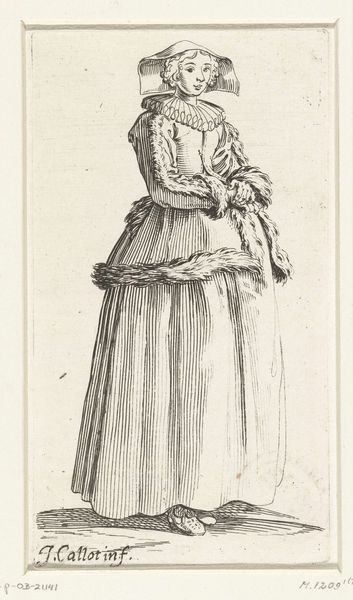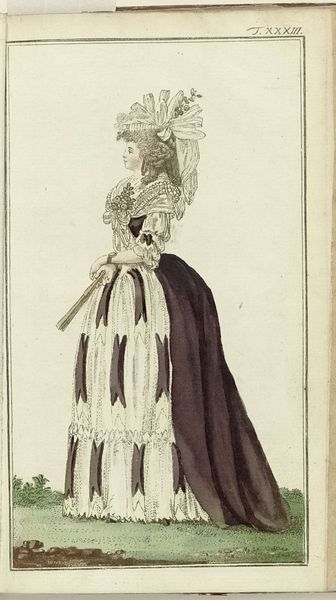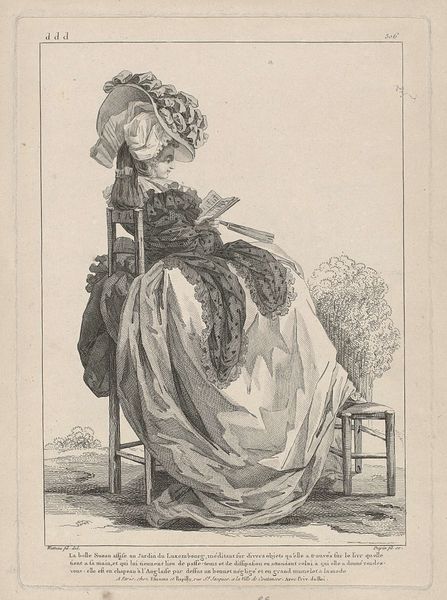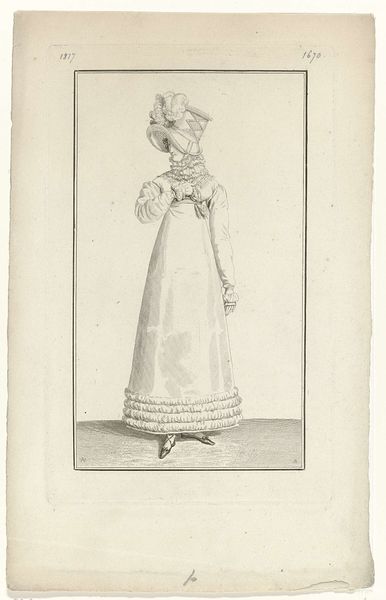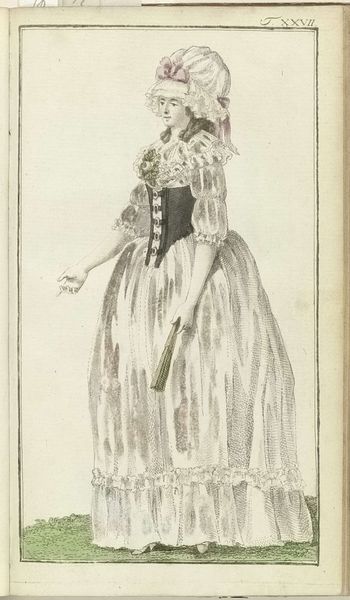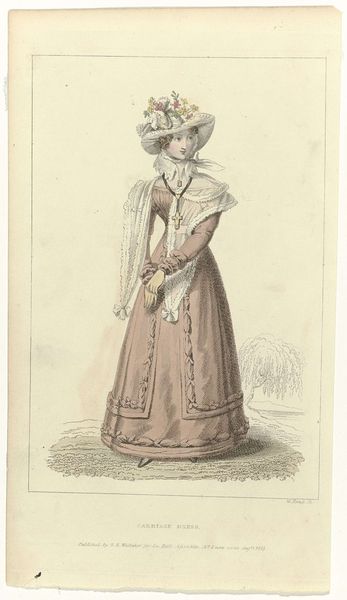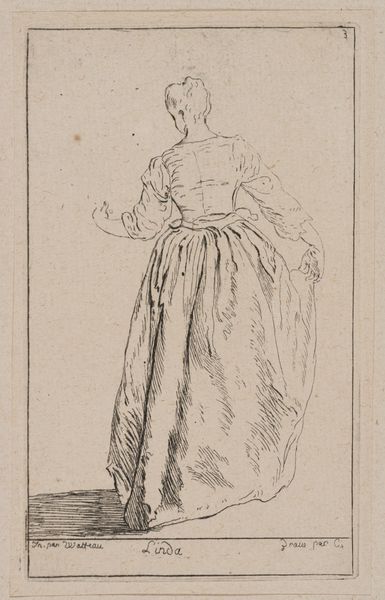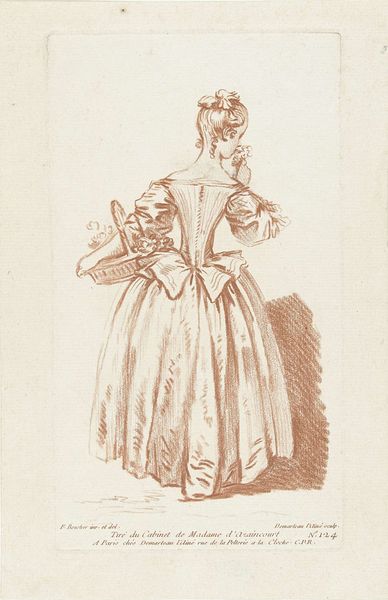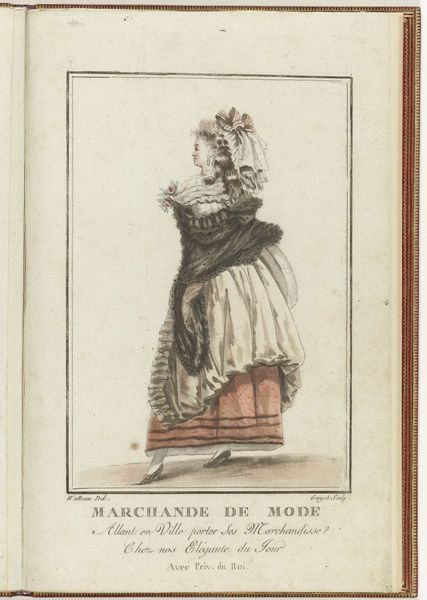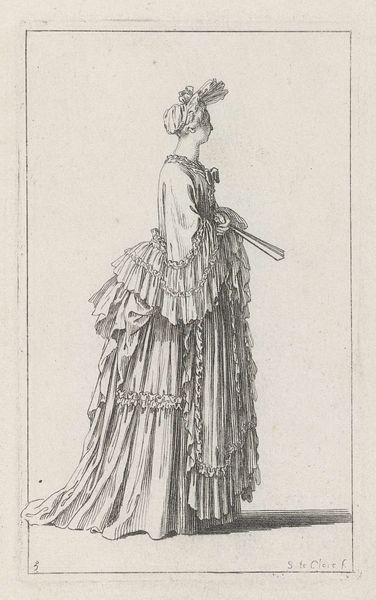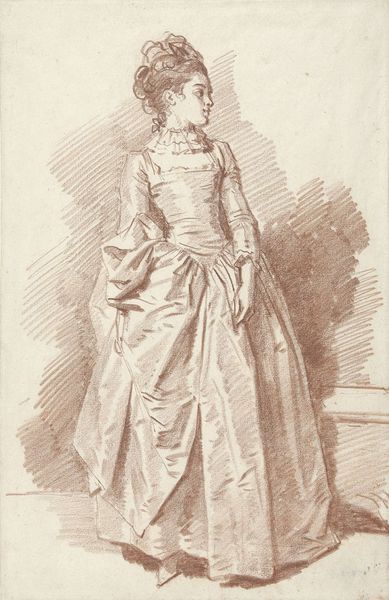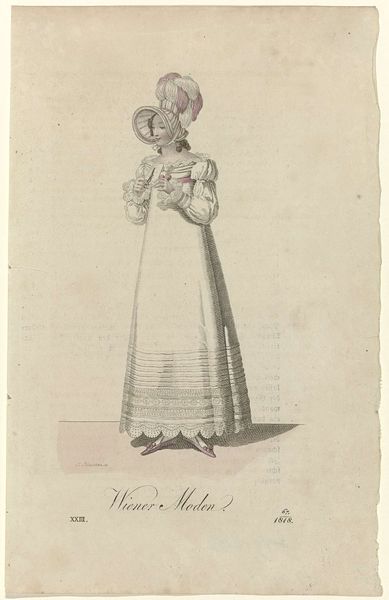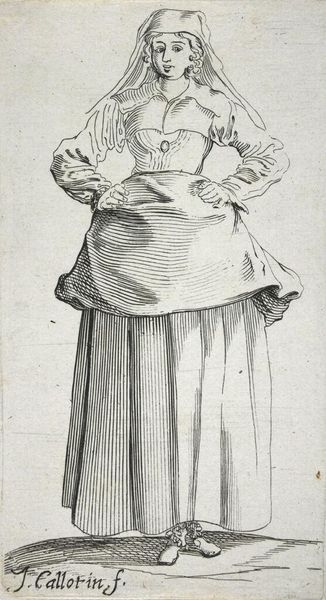
Gallerie des Modes et Costumes Français, 1785, ccc 297 : Jolie Femme se promenant seul (...) 1785
0:00
0:00
Dimensions: height 290 mm, width 208 mm
Copyright: Rijks Museum: Open Domain
Editor: This is a drawing, or rather an engraving, from 1785, titled "Gallerie des Modes et Costumes Fran\u00e7ais, 1785, ccc 297: Jolie Femme se promenant seul..." The details of the dress are so intricate! I'm really curious, how do we look at an image of fashion like this today? Curator: It’s fascinating to consider these images as documents of social performance, not just records of pretty dresses. How were images of fashion consumed? They weren't simply reflections of what people wore. Consider the institutions surrounding them - these engravings were part of publications, shaping desire, dictating trends. They weren’t passive; they actively participated in constructing the very concept of 'fashion.' What social strata had access to such publications and the fashion they promoted? Editor: So, these images are more like social blueprints, defining aspirations? Curator: Exactly! Think about the political implications, too. The French court heavily influenced fashion; luxury became a visual language, distinguishing nobility from the emerging bourgeoisie. Do you notice any details hinting at class or status? How does it all relate to what was happening in French society at the time? Editor: Well, all the frills and furs shout wealth to me. It's hard to imagine someone working wearing that. The focus seems entirely on leisurely activity and visual appeal. Curator: Precisely! This points to the privileges of the aristocracy. Yet, just a few years later, that entire system of visual signalling collapses during the French Revolution. Examining such images reveals much about the social and political tensions bubbling beneath the surface of apparent elegance. Editor: I see what you mean! Looking at it now, I can really think about who could have consumed it. Curator: Absolutely. Considering these works beyond their aesthetic appeal allows a richer appreciation for their role in shaping and reflecting social structures. Editor: Thank you; that's completely transformed how I view these kinds of images!
Comments
No comments
Be the first to comment and join the conversation on the ultimate creative platform.
